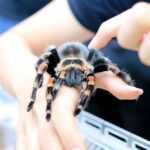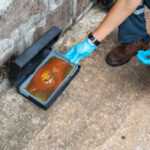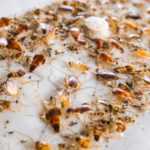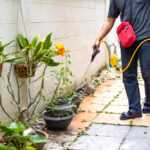Formosan Subterranean Termites: Identification and Control
Stop Formosan subterranean termites before they spread. Learn identification tips and proven control methods to protect your home today.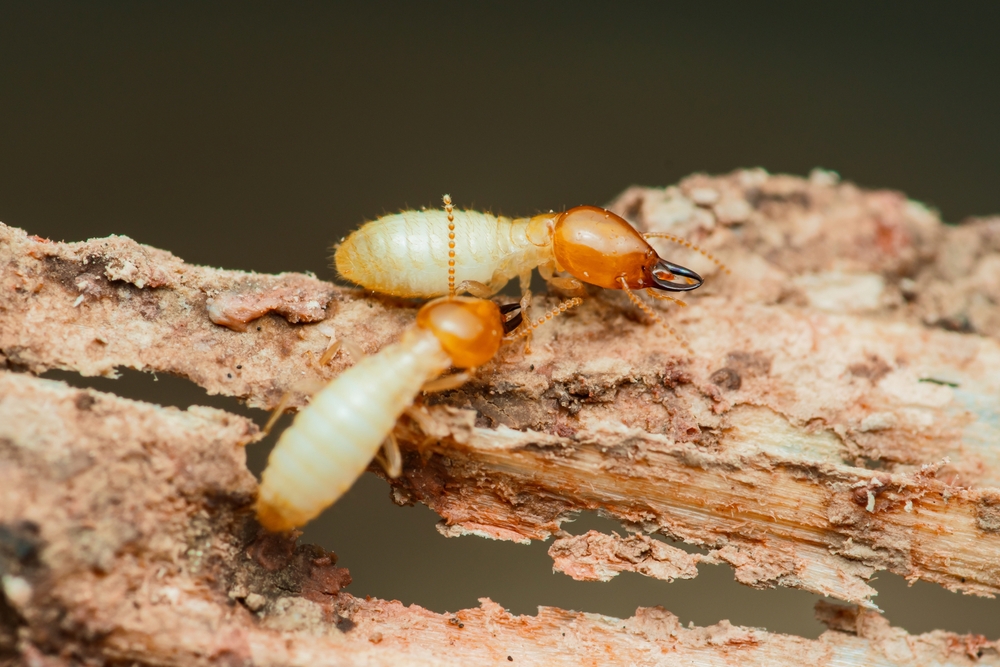
Controlling Formosan Subterranean Termite Infestations: Effective Strategies & Tips
Formosan subterranean termites are a highly destructive termite species known for their large colonies and aggressive foraging behavior. Originating from East Asia, specifically southern China and Taiwan, these Formosan subterranean termites (Coptotermes formosanus) have become a major pest in the U.S., particularly in warmer regions such as Florida, Texas, Louisiana, and Georgia. This article will help you understand, identify, and manage Formosan subterranean termites effectively.
- Formosan subterranean termites are highly destructive, with large colonies and unique nesting behaviors, including both subterranean and aerial carton nests, making them a significant pest in warmer regions of the United States.
- Early identification and recognition of signs, such as mud tubes, swarmers, damaged wood, and shed wings near window sills and spider webs, are crucial for effective management and prevention of extensive structural damage.
- Preventive measures, including moisture control, proper drainage, use of pressure-treated wood with creosote or other preservatives, and professional pest inspections, are essential steps in mitigating the risk of Formosan termite infestations.
Understanding Formosan Subterranean Termites
Formosan subterranean termites, scientifically known as Coptotermes formosanus, belong to the genus Coptotermes, which includes the largest number of termite pests worldwide. These termites are native to southern China and Taiwan and were first described in Taiwan (formerly Formosa). They were inadvertently introduced to the United States in 1956, likely through infested shipping materials like railroad crossties, and have since become a major pest in warmer regions.
Unlike native subterranean termites, Formosan termites form large colonies that can contain several million termites, making them particularly destructive. Their colonies consist of three castes: alates (swarmers or winged reproductives), soldiers, and workers. Formosan termite soldiers are known for their teardrop-shaped, yellowish brown heads and stout mandibles, which they use to defend the colony. They also secrete a white defensive fluid when disturbed.
The introduction of Formosan subterranean termites to the U.S. has led to significant challenges in urban and structural entomology. Their ability to build both underground and above-ground carton nests, and their aggressive nature, set them apart from other subterranean termite species, such as native subterranean termite soldiers from Reticulitermes species, making them a formidable pest to manage.
Identifying Formosan Subterranean Termites
Accurately identifying Formosan subterranean termites is key to managing them effectively. Formosan termite soldiers have distinctive, tear-dropped or egg-shaped heads that are significantly larger and darker than those of other castes. Their stout mandibles are adapted for defense, lacking teeth but powerful enough to fend off threats. When disturbed, soldiers may exude a white, glue-like defensive secretion from a fontanel on their head.
Formosan termite swarmers, or alates, are yellowish brown and measure about 5/16 inch (14-15mm) in length. Their wings are covered with numerous small hairs, a characteristic that helps distinguish them from other termite species and flying ants. These swarmers are often seen around light fixtures during their active periods, especially in early June, signaling a nearby infestation.
Differentiating Formosan termite workers from other termite species can be challenging, as workers look similar across subterranean termite species. Proper identification usually requires the expertise of a professional pest control service or an education center specializing in entomology.
Accurate identification aids in effective treatment and helps gauge the extent of the infestation and potential Formosan termite damage. Misidentification can lead to ineffective treatments and further damage to structures.
Signs of Infestation
Early recognition of a Formosan termite infestation can prevent extensive damage and costly repairs. One of the most common indicators is the presence of mud tubes on walls or wooden structures. These tubes, often about 0.25 to 0.5 inches in diameter, are built by termites to travel between their nests and food sources while avoiding exposure to light and predators.
Another telltale sign is the appearance of termite swarmers around light sources, especially during the evening in early June. These swarmers are winged reproductives that leave the colony to establish new nests. Finding their shed wings near window sills, light fixtures, and spider webs is a strong indication of a nearby infestation.
Damaged wood is another critical sign. Formosan termites typically eat wood along the grain, leaving it hollow and structurally weak. Tapping on infested wood with a hard object often produces a hollow sound, and the wood may appear blistered or swollen. In some cases, the damage may be hidden under paint, plaster, wallpaper, or asphalt shingles, making it less obvious but equally destructive.
Homeowners should remain vigilant and promptly report any signs of termite activity. Early detection can prevent extensive damage and lead to more effective management strategies.
Damage Caused by Formosan Subterranean Termites
Formosan subterranean termites are among the most destructive termite species in the United States, primarily due to their large colony sizes and aggressive foraging behavior. A single colony can contain several million termites, allowing them to cause significant structural damage in a short period.
Unlike native subterranean termites, Formosan termites can create both underground and above-ground carton nests, which increases their potential for damage. These termites can consume large amounts of wood rapidly, causing severe structural issues within months. For example, a mature colony can demolish one foot of 2×4 wood in approximately 25 days.
In addition to wood, Formosan termites can cause Formosan termite damage to non-cellulose materials such as thin sheets of soft metal (lead or copper), plaster, asphalt, and plastics in their search for food and moisture. This ability further amplifies their destructive potential, as they can compromise various structural components, including utility poles, living trees, and shrubs.
Distribution and Spread
Formosan subterranean termites are primarily found in the warmer regions of the United States. They have been detected in various states, including:
- Alabama
- California
- Florida
- Georgia
- Hawaii
- Louisiana
- Mississippi
- North Carolina
- South Carolina
- Tennessee
- Texas
Their prevalence in these areas has led to numerous reports of structural damage and high repair costs.
The spread of Formosan termites in the U.S. was largely facilitated by human activities, particularly the use of infested materials like railroad crossties. These termites were inadvertently introduced to the southern U.S. after World War II, and their populations have since expanded.
Formosan termites thrive in warm, humid environments, making them a significant threat in states with such climates. Their ability to build large colonies and cause extensive damage has made them a major concern for homeowners and pest control professionals alike.
Prevention Methods
Several proactive steps can prevent Formosan termite infestations. Managing humidity in crawl spaces and basements is vital since termites are drawn to moisture. Proper ventilation and dehumidifiers can keep these areas dry.
Diverting water away from your home’s foundation is another effective measure. Proper drainage systems and ensuring gutters and downspouts direct water away from the structure can help. Addressing leaky plumbing and excessive moisture can further reduce termite attraction.
Employing pressure-treated wood, often treated with preservatives such as creosote or alkaline copper quaternary (ACQ), where it meets soil can serve as an effective barrier, as this type of wood is less prone to termite damage, adding another layer of protection.
Professional pest control services are crucial in preventing infestations. Regular inspections can detect early signs of termite activity and prevent escalation. Annual inspections and education center resources are recommended for ongoing protection.
These preventive measures, can significantly reduce the risk of infestation, helping protect your home and property.
Treatment Options
Multiple treatment options exist for managing Formosan termite infestations. Chemical barriers in the soil are highly effective, designed to repel termites and prevent future infestations by creating a protective zone around the structure.
Soil treatments involve applying termiticides such as permethrin, bifenthrin, fipronil, or imidacloprid into drilled holes around the foundation, creating a continuous barrier. Bait systems also work effectively, using bait stations to attract and kill termites, targeting entire colonies.
Aerosol sprays can be used for localized infestations, offering immediate relief when applied directly to infested areas. Combining these treatments can provide comprehensive protection against Formosan termites.
Reporting and Professional Help
Professional pest control services are crucial for managing Formosan termite infestations. They employ comprehensive methods such as soil chemical barriers and bait systems. A professional pest control contract offers ongoing protection, ensuring any potential infestations are promptly detected and treated.
A detailed inspection report from pest control professionals can document active or previous infestations, offering homeowners a clear understanding of the extent of the issue, the possible sources of bedbug infestations, and necessary treatment steps.
Consulting local pest control programs, such as state departments and education centers, can offer additional resources and reporting guidelines. These programs provide valuable information and support for homeowners facing termite issues.
Understanding Formosan subterranean termites and their destructive potential is crucial for effective management. By recognizing the signs of infestation, implementing preventive measures, and utilizing appropriate treatment options, homeowners can protect their properties from significant damage.
Taking prompt action and seeking professional help when needed can make all the difference in controlling these persistent pests. Protect your home, and don’t let Formosan termites undermine your peace of mind.
Frequently Asked Questions
What are the key characteristics of Formosan termite soldiers?
Formosan termite soldiers are characterized by their larger, yellowish brown to brownish yellow, tear-dropped or egg-shaped heads and stout mandibles, which are specifically adapted for defense. These features enable them to protect their colony effectively. When disturbed, they may secrete a white defensive fluid.
How do Formosan termites differ from native subterranean termites?
Formosan termites differ from native subterranean termites by forming larger colonies, creating both underground and above-ground carton nests, and causing damage at a significantly faster rate. Their soldiers have distinct head shapes compared to native subterranean termite soldiers from Reticulitermes species.
What are common signs of a Formosan termite infestation?
Common signs of a Formosan termite infestation include mud tubes on walls, signs of damaged wood that sounds hollow when tapped with a hard object, termite swarmers near light sources in early June, and shed wings found near window sills, light fixtures, and spider webs. If you notice any of these signs, it is essential to take action promptly.
How can I prevent Formosan termite infestations?
To effectively prevent Formosan termite infestations, manage humidity levels, divert water away from your foundation, utilize pressure-treated wood treated with preservatives such as creosote, and arrange for regular professional pest control inspections. Utilizing resources from education centers can also improve prevention efforts.
What treatment options are available for Formosan termite infestations?
Effective treatment options for Formosan termite infestations include chemical barriers in the soil, termiticide soil treatments, bait systems, and localized aerosol sprays. Choosing the appropriate method depends on the severity of the infestation and the specific conditions of the property.
